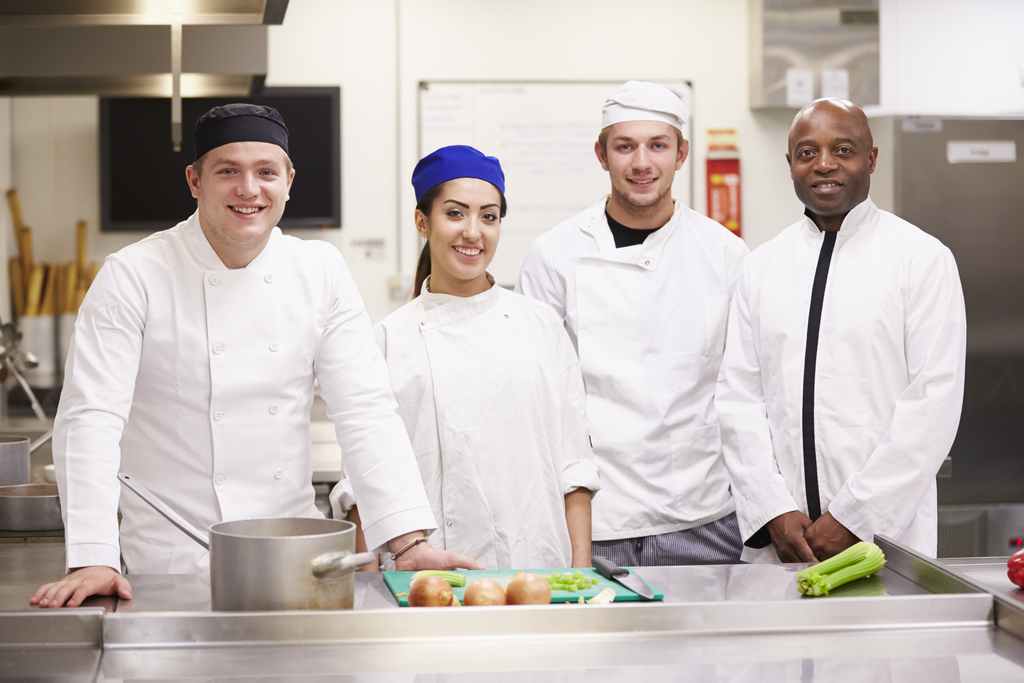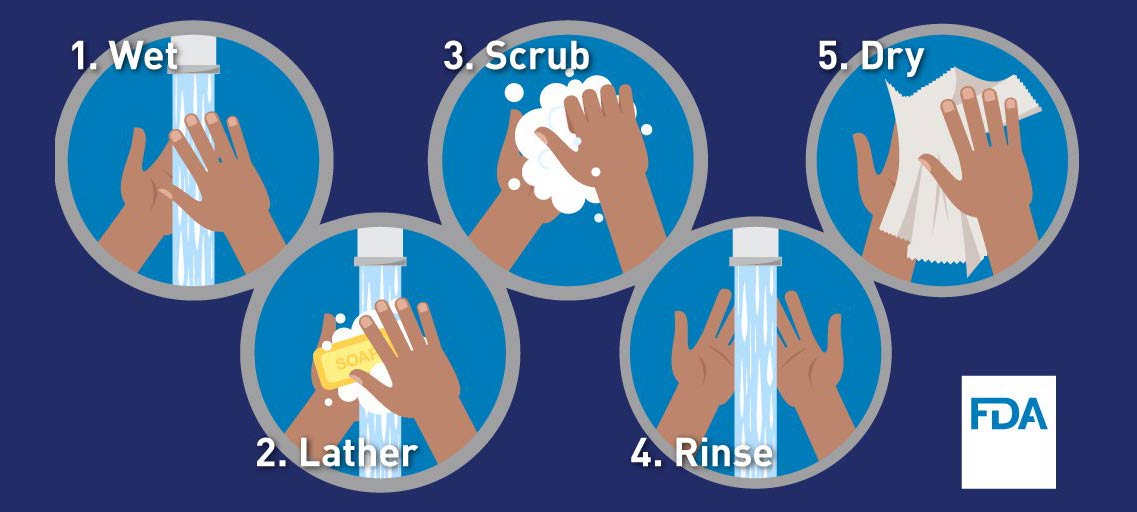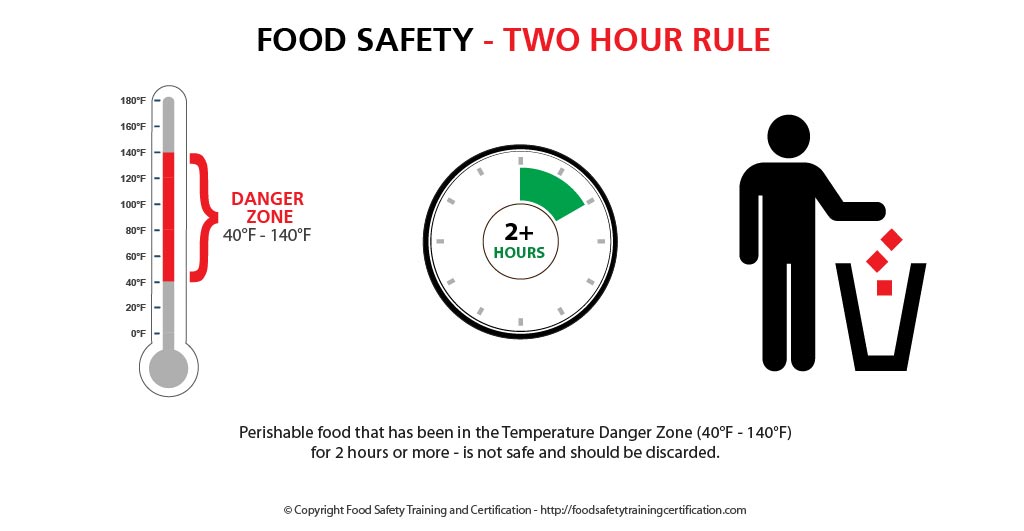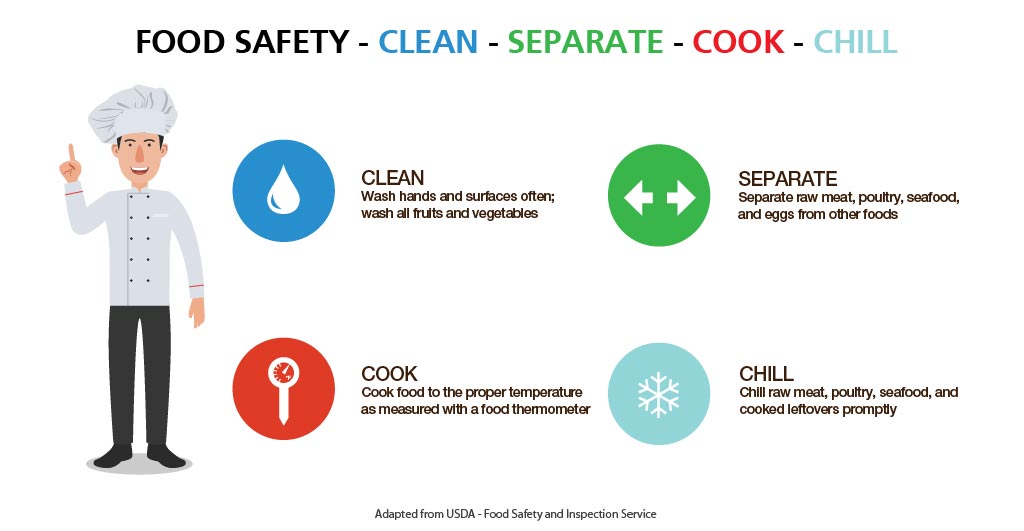Food Service Safety Month is observed in December and was established to remind everyone, from employees in the food service industry to people at home, that food safety is of great importance.
While Food Service Safety Month focuses on keeping food prepared in the service industry safe, it also serves to remind people to follow proper food safe procedure to ensure what they prepare stays free of risks.



In commercial food service, Food Service Safety Month is a reminder to have a rigorous food safety training program for the staff with appropriate signage to always keep food safety in mind.
Likewise, food service establishments are required to have a person-in-charge, an owner, or manager of a food establishment be a Certified Food Manager (CFM).
Each December, this awareness campaign seeks to ensure individuals in the food service industry are trained and following safe procedures and principles.



Training and Education
Food safety training and education is the key to ensuring a culture of food safety in food-service organizations. By training and educating both the managers and the front-line workers about threat to food safety, safety can remain important to reduce the risk of foodborne illness.
- Learn about proper hygiene, cross contamination, cold and hot food safety, foodborne pathogens, and best practices to prevent foodborne illness.
- Food Manager Training & ANSI Certification - $99.00
- Food Handler Training - only $7.00!
- HACCP Training: 16hr/4hr/1hr
- Food Allergy Training - $15.00
- Enter Promo "train10off" at Checkout
Types of Foodborne Illness
Foodborne illness are classified or categorized in various different ways: type of pathogen, type of microorganism, most common, most deadly, or the type of illness they afflict on humans.
Generally though, foodborne illnesses are divided into two classifications and categorized by the type of illnesses they create: foodborne infection or foodborne intoxication.
A third hybrid classification also exists: foodborne toxin-mediated infections. These illnesses are caused by eating food containing harmful microorganisms – which then also produces toxins while in the intestinal tract.



Causes of Foodborne Illness
Food Illness causes fall into three categories:
- Biological hazards include bacteria, viruses, and parasites. Bacteria and viruses are responsible for most foodborne illnesses. Biological hazards are the biggest threat to food safety. They can be inherent in the product or due to mishandling (e.g., time/temperature abuse).
- Chemical hazards include natural toxins and chemical contaminants. Some natural toxins are associated with the food itself (i.e., certain mushrooms, PSP in molluscan shellfish), some are made by pathogens in the food when it is time/temperature abused (i.e., histamine development in certain seafood species). Some additives, such as sulfites, can be a hazard to some people. Chemical contamination can occur when products (i.e., cleaners) are not used correctly.
- Food allergens are a chemical hazard. Some people are sensitive to proteins in foods. Every food is different. Eight major food allergens include milk, eggs, fish, crustacean shellfish (lobster, crab, shrimp), wheat, soy, peanuts, tree nuts.
- Physical hazards can include metal shavings from cans and plastic pieces or broken glass.



Food Safe Cooking Temperatures
When preparing and cooking food, proper food safe procedures need to be considered and followed. Whether you prepare food inside the home or work making food in a restaurant or diner, food requires being cooked to a certain temperature before it is able to be served. This prevents the risk of any bacteria surviving on the food that might make a person ill.



Keeping Hands Clean
One of the most effective ways to keep food preparation safe is to wash your hands. In fact, since that’s a great way to prevent illnesses like the common cold, why not pop a bottle of alcohol hand sanitizer in your bag this month so you get into the habit of cleaning up before grabbing a bite?



The Food Safe Danger Zone
Bacteria multiply rapidly between 40°F and 140°F. To keep food out of this “Danger Zone,” keep cold food cold and hot food hot. Keep food cold in the refrigerator, in coolers, or on the serving line on ice. Keep hot food in the oven, in heated chafing dishes, or in preheated steam tables, warming trays and/or slow cookers.
Never leave perishable foods, such as meat, poultry, eggs and casseroles in the “Danger Zone” over 2 hours; 1 hour in temperatures above 90°F.



Four Steps to Food Safety
By following four simple steps, you can protect your families and friends and keep your food safe.
- Clean—Wash hands and surfaces often.
- Separate—Separate raw meats from other foods.
- Cook—Cook to the right temperature.
- Chill—Refrigerate food promptly.



Summary
Food Service Safety Month is observed in December and was established to remind everyone, from employees in the food service industry to people at home, that food safety is of great importance.



